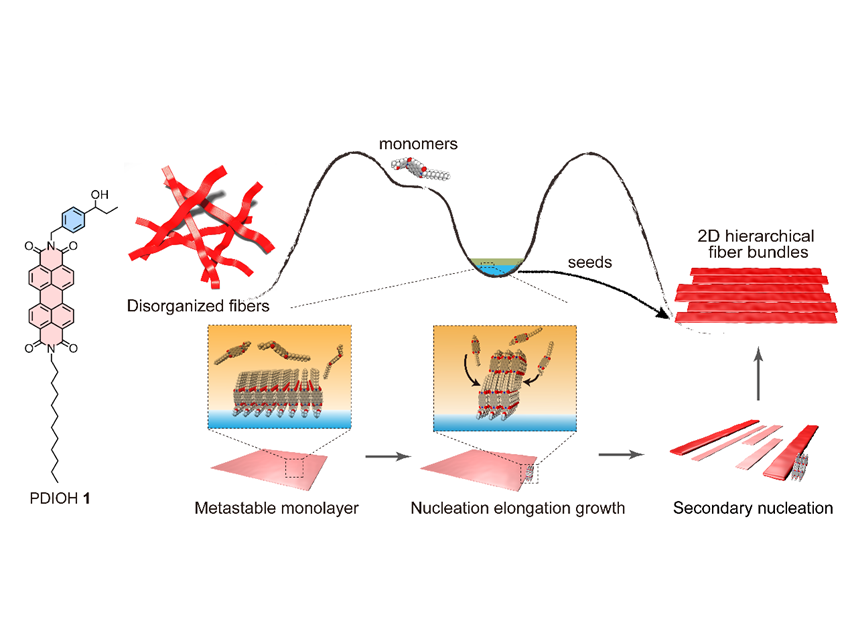Inspired by hierarchical structures in biological systems, such as the ordered arrangement of actin filaments, chemists and materials scientists aim to develop artificial hierarchical assemblies with long-range order to achieve functional breakthroughs in catalysis, sensing, and biomedicine. Constructing two-dimensional hierarchical structures precisely and controllably via a “bottom-up” approach, however, remains a major challenge.
Li Yu and Yanjun Gong, Ministry of Education of Shandong University, China, and colleagues have developed an interfacial living supramolecular polymerization strategy. By designing an amphiphilic perylene diimide derivative (PDIOH 1), they achieved controlled construction of two-dimensional hierarchical architectures through spontaneous formation of a monomolecular film at the liquid-liquid interface. This approach suppresses bulk-phase nucleation while promoting surface-catalyzed secondary nucleation, guiding the molecular evolution from 1D fibers to 2D ordered structures.
The resulting 2D films show highly ordered structural alignment and demonstrate a 3.4-fold enhancement in exciton migration efficiency compared with disordered aggregates. They also show significantly improved detection sensitivity toward trimethylamine gas.
Overall, the study demonstrates that interfacial supramolecular polymerization at the liquid-liquid interface can induce a trap state of PDIOH 1, enabling the formation of macroscopic 2D hierarchical architectures. These findings highlight the robustness of the interfacial living supramolecular polymerization strategy for long-term applications and its scalability toward industrial production. The resulting ordered 2D films offer enhanced interfacial contact and efficient exciton transport, holding great promise for photocatalysis and optoelectronic devices.
- Tailored 2D hierarchical architectures via interfacial living supramolecular polymerization for enhanced exciton migration
Shuya Liu, Qiongzheng Hu, Wenjun Tai, Yongxian Guo, Yan Yan, Yanjun Gong, Li Yu, Yanke Che,
Aggregate 2025
https://doi.org/10.1002/agt2.70155

